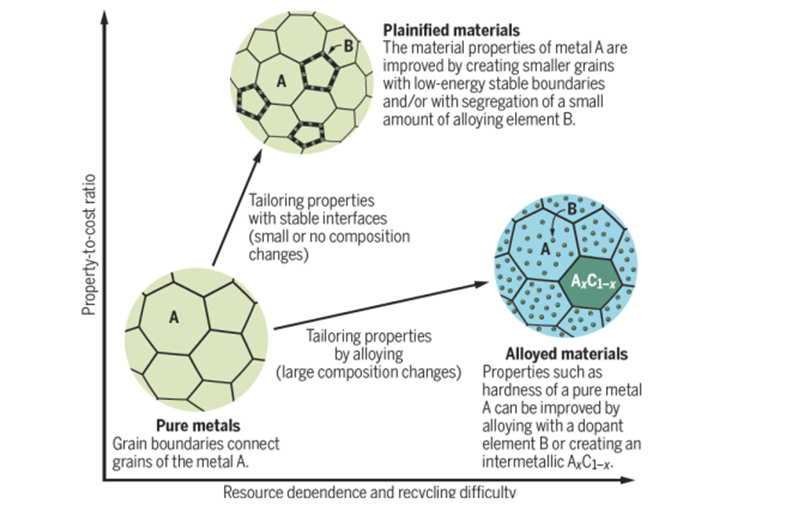Scientists Propose to Advance Material Sustainability Through Plainification
In a study published in Science, Prof. LI Xiuyan and Prof. LU Ke from Shenyang National Laboratory for Materials Science (SYNL), Institute of Metal Research of the Chinese Academy of Sciences, proposed to advance material properties by plainification, which means tailoring stable interfaces at different length scales instead of alloying.
The newly proposed strategy intends to lower materials cost and increase their resource-independence and recyclability, therefore advancing material sustainability.
Plainification of materials aims to reduce alloying in material development. Although with sound principle, plainification of metals is facing challenges due to the intrinsic instability of microstructures at the nanometer scale where property variations are dramatically elevated.
Recent studies revealed that nano-sized grains in pure copper and nickel produced from plastic deformation exhibit notable thermal and mechanical stability against coarsening below a critical grain size, thanks to an autonomous grain boundary relaxation to low-energy states (Science(2018), Phys. Rev. Lett. (2019)). This finding offers new possibilities for developing stable nanostructured metals and alloys with novel properties, foundation of the material plainification strategy. Stabilization of nanoscale grains in metals takes advantage of their ability to suppress dislocation nucleation, providing a strengthening mechanism that is distinct from the conventional way of resisting dislocation slip.
The novel strengthening mechanism highlights new opportunities of plainification for greatly advancing material properties by tailoring stable interfaces at different length scales with fewer or no alloying elements.
As the chief scientist, Prof. LI Xiuyan leads the Key R&D Project on “Plainification of materials with low-energy interfaces” which is financially supported by Ministry of Science and Technology (MOST) starting in 2018.

The performance of materials is often improved by stabilizing interfaces between grains by alloying with other elements. Plainifield materials accomplish this goal by tailoring stable interfaces with fewer or no alloying elements, which can improve resource sustainability. (Image by SYNL)